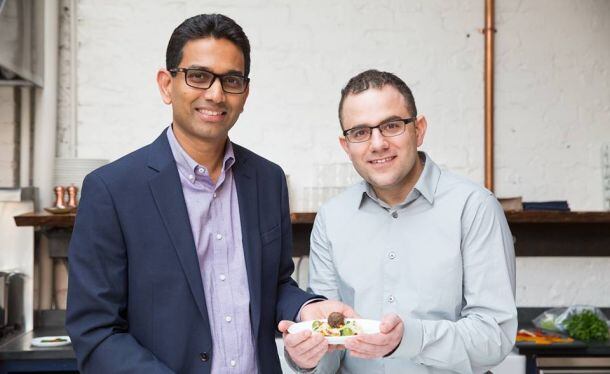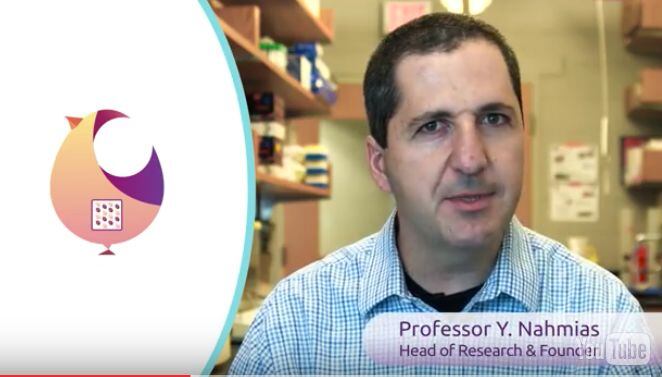Speaking to FoodNavigator-USA as the San Leandro-based company launched a crowdfunding campaign on Indiegogo in a bid to raise $100k, senior scientist Eric Schulze PhD said:
“We can definitely see value in the Tesla approach – where you start with a luxury product, and then bring out mass market products as costs come down - but obviously our goal is to get to parity with conventional meat or below parity.”
I’m confident there is a regulatory pathway for the company to go forward
While $100k won’t go very far considering the scope of the company’s ambitions (most of the $3m+ funding for Memphis Meats has come from investors including NewCrop, SOSV, Indie Bio and Fifty Years ), the Indiegogo campaign was primarily designed to prove that real-life consumers – as well as foodtech investors - buy into the concept of meat minus farm animals, said Dr Schulze, one of eight team members at the company, which was co-founded by Umi Valeti (CEO), Nicholas Genovese (CSO), and Will Clem in 2015.
“We’ve got a lot of supporters [the firm’s facebook page has 81,000+ likes with many consumers enthused as much by the ‘cruelty-free’ message as by the sustainability angle] and the campaign is going wonderfully well. We are decoupling the notion of meat from the animal; we’re making meat, but we don’t need to feed, breed or slaughter animals.”
And judging by the progress of the campaign to date [as of Dec 2, it has raised 88k from 1,110 backers], the enthusiasm is there, says Dr Schulze - who has a doctorate in genetic, molecular, and cellular biology - and joined Memphis Meats in August after spending five years at the FDA as part of a team tasked with evaluating genetically engineered animals and novel biotechnology (experience that may prove invaluable as the firm attempts to navigate the regulatory landscape around cultured meat).
“I’m confident there is a regulatory pathway for the company to go forward.”
Animal serum: It’s possible to eliminate it, the challenge is doing this cost effectively
So how does the process work?
D Schulze won’t go into detail about the types of cells that Memphis Meats is using beyond noting that they are self-renewing, such that they will divide and grow indefinitely. Similarly he won’t say whether the company is using genetic engineering tricks to ‘immortalize’ the cell lines (groups of different types of cells that make muscle, fat, connective tissue etc) or whether it is using naturally immortal stem cells.
However, he confirms that the company is not just growing muscle cells – but is working with cells which can differentiate into all of the cell types necessary to make meat taste, look, cook and behave, like meat.

As for the growth medium, the nutrient bath the cells need in order to survive and grow, he is confident that Memphis Meats will ultimately be able to find a cost-effective alternative to one of its more controversial components: animal serum.
Fetal bovine serum - which pioneers in the clean meat space growing beef have typically used - is derived from blood extracted from a fetus after it is removed from a slaughtered dairy cow, which is not consistent with the philosophy underpinning cultured meat, and can also be inconsistent from batch to batch, is in limited supply, and carries a risk of pathogen contamination.
“There are alternatives on the market, so it’s absolutely possible to eliminate it, the challenge is doing this cost effectively at scale,” said Dr Schulze.
Another thing he is not able to describe – as it is proprietary – are the bioreactors in which the meat is grown, or what ‘scaffolding' the company is using such that the cell lines grow in a way that ensures the ‘meat’ replicates the texture, taste, and appearance of conventionally-produced meat (eg. with the right ratio of fat, muscle and other cell types).

Proprietary kit
As for the kit involved, Memphis Meats is using a variety of proprietary pieces of kit it has made in house and commercially available equipment, with Dr Schulze describing parts of the production process as “continuous.”
Asked about the business model – whether Memphis Meats will license its technology, partner with a big food company or look to become a major CPG company in its own right, for example – he can’t talk about longer-term goals, but says the immediate priority is to “produce meat with the name Memphis in front of it and get it to consumers.”
Business analyst David Kay, meanwhile, confirms that, "We have had interest from meat companies, and we are open to working with them."
Terminology: ‘Clean meat?’ ‘Lab-grown meat?’ ‘Cultured meat?’
But what about the terminology? Is Memphis Meat’s product ‘clean meat,’ ‘lab-grown meat,’ ‘cultured meat’ or something else?
The Good Food Institute, for example, has been encouraging stakeholders to use the term ‘clean meat,’ given that ‘lab-grown meat’ or ‘cultured meat’ conjure up misleading images of petri dishes and laboratories, or fermented foods made with bacteria, yeasts, or fungi.

"The phrase 'clean meat' is similar to 'clean energy' in that it immediately communicates important aspects of the technology—both the environmental benefits and the decrease in food-borne pathogens and drug residues."
Bruce Friedrich, executive director, The Good Food Institute (read more HERE)
The process is aseptic, so no bacteria or fungus can grow
Ultimately, said Dr Schulze, consumers (and regulators) will probably decide, although he personally likes the 'clean energy' analogy as the meat is more environmentally friendly and will also be ‘cleaner’ in a literal sense in that it will be free of antibiotics, fecal matter, pathogens, and other contaminants found in conventional meat.
“The process is aseptic, so no bacteria or fungus can grow, so we don’t need to use preservatives either,” he added.

The economics of clean meat production
So will Memphis Meats and others in the embryonic field of clean meat production – a field which has its roots in regenerative medicine and tissue engineering but is attempting to operate on a completely different scale – really be able to meet their goal of getting commercially viable products to market within five years?
Liz Specht, PhD, senior scientist at the Good Food Institute (which works with several players developing ‘clean’ (cultured) meat, and plant-based meat, milk, and eggs), says that when you break the process down into four components – cell lines, growth media, scaffolding, and bioreactor scale up - the biggest challenge is probably the bioreactor scale up, although every stage has unique challenges.
Cell lines and growth media
She explains: “If you look at cell lines, there are lots of different options. There are fully undifferentiated embryonic stem cells that have some capacity to regenerate on their own, and then there are semi-differentiated stem cells such as adult muscle stem cells you can derive from a biopsy that have more limited regenerative capacity. It depends what your initial cell source is, as to whether it’s already set up to regenerate indefinitely, or if you need to coax it to become ‘immortalized’ using genetic techniques.
“Most companies are working with cell lines that differentiate into all cell types, so they might work with mesenchymal stem cells for example, adult stem cells that can grow into muscle, fats, fibroblasts [connective tissues] and so on, that’s a common strategy.
“Another approach is to take a cell line, for example a fibroblast cell line, and do what is called trans-differentiation, so you take the cell line that’s differentiated into one of those [fibroblasts] and coax it to hop over to muscle or to fat.
“The challenge is to get the cells to differentiate into all those different cell types all at once, so simultaneously co-culturing those different cell types.”
As for the growth medium, she says, “there are already all kinds of serum-free formulations out there in the biomedical industry, so in my eyes it’s not a question of can it be done, but how to get the costs down.”

“Most companies are working with cell lines that differentiate into all cell types, so they might work with mesenchymal stem cells for example, adult stem cells that can grow into muscle, fats, fibroblasts [connective tissues] and so on."
Liz Specht, PhD, senior scientist, The Good Food Institute
Scaffolding and bioreactor scale-up
When it comes to the bioreactors, it's probably going to be a two-stage process, she says.
First you have to proliferate cells, perhaps in a stir tank bioreactor where you might suspend your cells in the growth medium, stir them and keep them warm.
One approach to keep the cells suspended is to use tiny beads for the cells to attach themselves to, but you then have to find a way to remove them from the beads and harvest them, probably by adding enzymes that break down the attachments, without damaging the cells, so you can then transfer them to a larger bioreactor to grow into meat, she said.
Ideally, of course, you’d want to find a way to keep the cells suspended without having to be attached to anything, she says. "I see this stage as a continuous process where you might siphon off cells as they reach density, while stage two lends itself to more of a batch process.

Will consumers eat 'clean meat'? It all depends how you phrase the question, says Good Food Institute executive director Bruce Friedrich...
Stage two would probably require seeding the cells onto some kind of bio-based 'scaffolding' - a structure for the cells to attach to and grow on and around which directs the differentiation of various cell types to encourage an organized pattern of muscle, fat, and connective tissue cells to give that authentic meaty texture, she said.
And at this stage, the scaffolding would need to be something that is subsumed within the final meat product – so would have to be made out of something that is degradable over time, or something that would not impact the taste or safety of the final product, such as cellulose or collagen (there are animal-free versions in development – click HERE), she explained.
"Stage two is a real challenge because we're talking about building bioreactors that don’t yet exist at [the] scale [required for mass-production of clean meat].”

